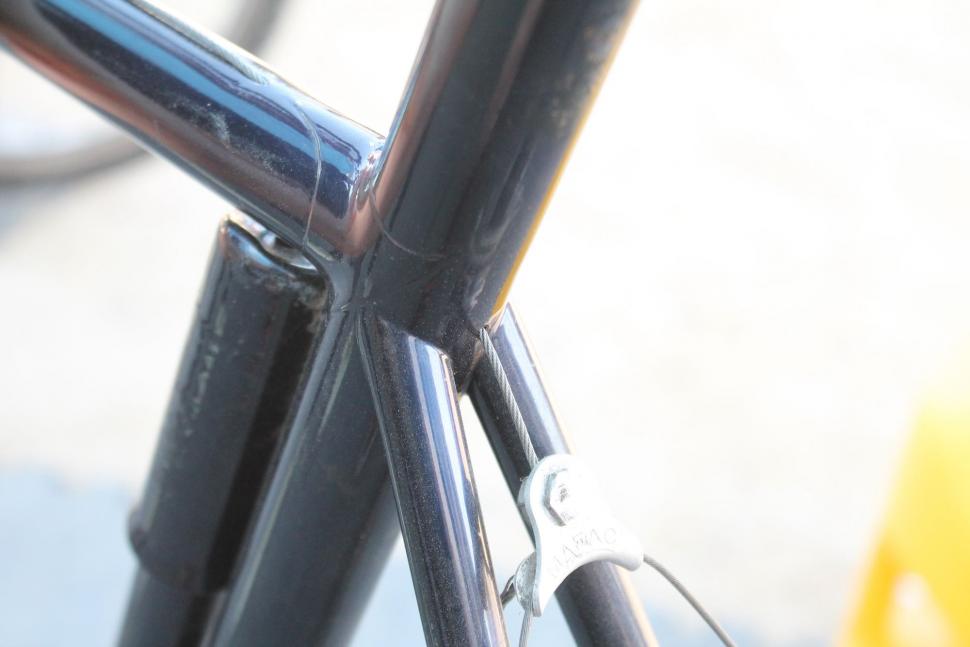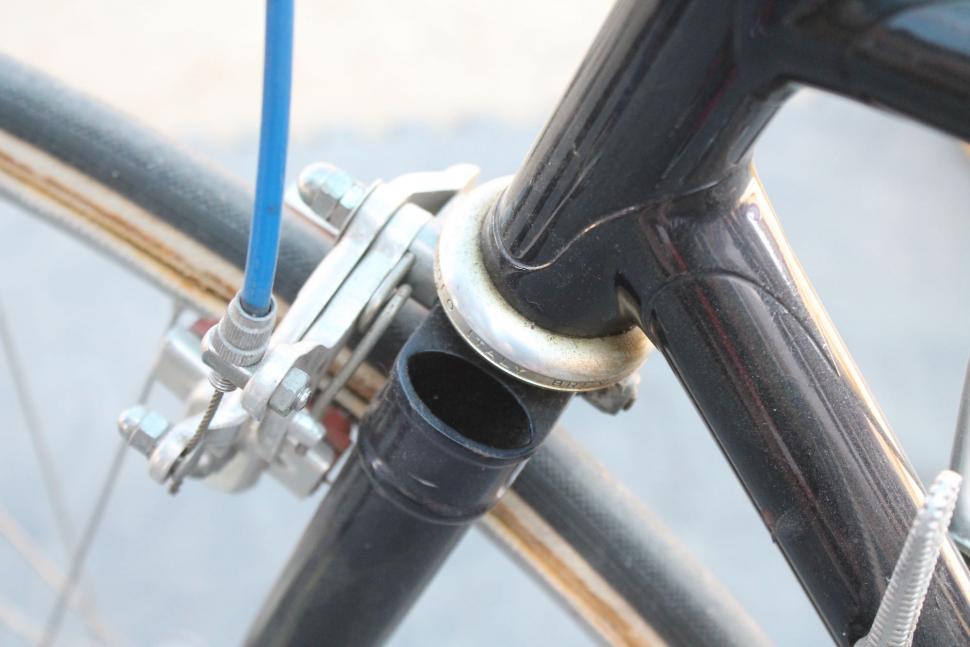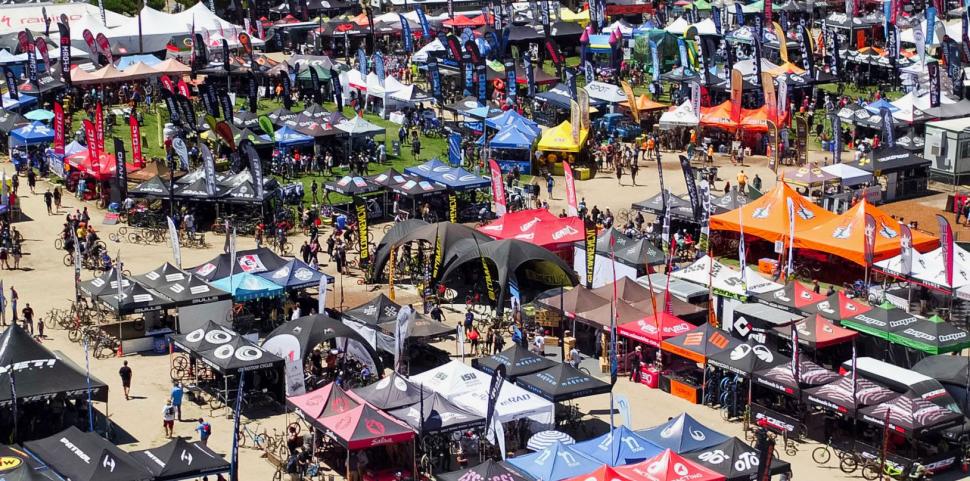- News
- Reviews
- Bikes
- Accessories
- Accessories - misc
- Computer mounts
- Bags
- Bar ends
- Bike bags & cases
- Bottle cages
- Bottles
- Cameras
- Car racks
- Child seats
- Computers
- Glasses
- GPS units
- Helmets
- Lights - front
- Lights - rear
- Lights - sets
- Locks
- Mirrors
- Mudguards
- Racks
- Pumps & CO2 inflators
- Puncture kits
- Reflectives
- Smart watches
- Stands and racks
- Trailers
- Clothing
- Components
- Bar tape & grips
- Bottom brackets
- Brake & gear cables
- Brake & STI levers
- Brake pads & spares
- Brakes
- Cassettes & freewheels
- Chains
- Chainsets & chainrings
- Derailleurs - front
- Derailleurs - rear
- Forks
- Gear levers & shifters
- Groupsets
- Handlebars & extensions
- Headsets
- Hubs
- Inner tubes
- Pedals
- Quick releases & skewers
- Saddles
- Seatposts
- Stems
- Wheels
- Tyres
- Health, fitness and nutrition
- Tools and workshop
- Miscellaneous
- Tubeless valves
- Buyers Guides
- Features
- Forum
- Recommends
- Podcast
feature
Check out this bike Tom Ritchey built at 17
This bike built in the early 1970s by Tom Ritchey – the bicycle frame builder and designer behind the Ritchey brand – exhibits some unusual features that are way ahead of their time. The Ritchey team showed us around it at the recent Sea Otter Classic expo.
Ritchey began building bikes in California 50 years ago at the age of 17. Writing on the down tube of this one says: “Custom Built For MY POP”.
It’s a lugged construction made using steel tubing – typical of the time – and the gear shifters are mounted on the down tube, but there are a few unusual features.
The cable for the rear cantilever brake is routed along the top of the top tube, through a very close-fitting cable guide. It then ducks into a hole in the tube just ahead of the seat tube junction and emerges centrally between the seatstays. It’s a really neat design.
The seat tube is extended well beyond the top tube and seatstay junction. Rather than housing a standard seatpost with a separate saddle fixed on top, Ritchey effectively combines an ultra-short seatpost with a saddle that has a single central rail… Well, it’s perhaps better described as a central tube.
This is a little like the I-Beam and Monolink saddle technologies introduced by other brands many years later, but without any adjustment so we’re assuming that Tom’s father was cool with the upward tilt to the saddle.
The guide around the top of the bottom bracket shell for the front derailleur cable is an unusual design.
Both the chainstays and the seatstays are ultra-skinny, as are the dropouts.
Rather than a quill stem, Ritchey uses a clamp-on system that’s very similar to one you might see today – in concept, at least – although the threaded headset doesn’t require a bolted top cap like today’s threadless designs.
Although it’s hard to make out from the photographs, the tops of the fork legs are open. Unlike the rear brake, the front calliper is a side pull design.
Ritchey later developed his fillet brazing frame building technique that didn’t require lugs. This allowed him to use larger diameter thin-walled tubes, and also to use ovalised tubes to increase stiffness and reduce weight.
Mat has been in cycling media since 1996, on titles including BikeRadar, Total Bike, Total Mountain Bike, What Mountain Bike and Mountain Biking UK, and he has been editor of 220 Triathlon and Cycling Plus. Mat has been road.cc technical editor for over a decade, testing bikes, fettling the latest kit, and trying out the most up-to-the-minute clothing. He has won his category in Ironman UK 70.3 and finished on the podium in both marathons he has run. Mat is a Cambridge graduate who did a post-grad in magazine journalism, and he is a winner of the Cycling Media Award for Specialist Online Writer. Now over 50, he's riding road and gravel bikes most days for fun and fitness rather than training for competitions.
Latest Comments
- burncpt 10 min 3 sec ago
There's a very good reason why pump tracks are often built in deprived areas - because, as the article mentions, they are excellent at reducing...
- mattsccm 1 hour 36 min ago
I have to assume that the cyclist wasn't thick enough to just change lanes without looking. Not a small puddle so I guess that they saw it and...
- Simon E 2 hours 29 min ago
Being a titchy lightweight I find the minimum pressures shown on bike tyres are considerably higher than I would use....
- Simon E 2 hours 43 min ago
Bruyneel saying publicly that Boonen "should shut up" is all you need to know about both Bruyneel and the doping regime at his team. Dirty in both...
- Barraob1 2 hours 56 min ago
I like it because it's a bit different, but it's way out of my price range. Wonder if it will take off, or will we be talking about in 15 years...
- kingleo 3 hours 4 min ago
Cyclists used the roads before cars - it was cyclists who petitioned the government to put a hard surface on our roads.
- wtjs 3 hours 1 min ago
I had a brief moment of déjà vu about established reds...
- hawkinspeter 6 hours 32 min ago
I saw something about the Smart Lever a month or so ago, and was intrigued enough to put it on my Xmas list, so maybe I'll get to have a play with...
- hawkinspeter 8 hours 4 min ago
Who the fuck's that?
- PRSboy 8 hours 49 min ago
Rather better than my effort on Coll de Rates at 28:05, but in my defence it was 30c, I'd had a big lunch and a beer and climbed it on an old MTB I...






















Add new comment
2 comments
For a '70s bike, that is far out: vertical dropouts and lots of braze-ons, as well as the features above. Brazing a well-aligned rear triangle with vertical dropouts is a skill at any age, let alone 17.
Gorgeous. I'm showing my son and telling him he's got 5 years to learn lugged construction. They do 'smithing at his school so I might get lucky.